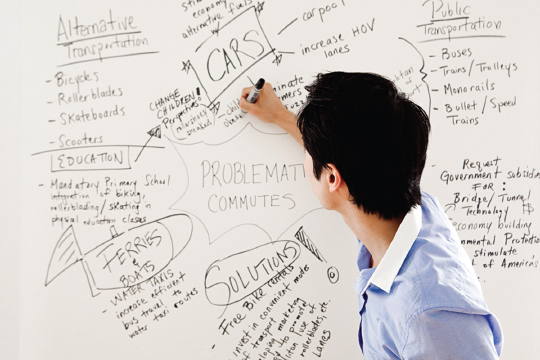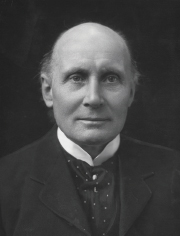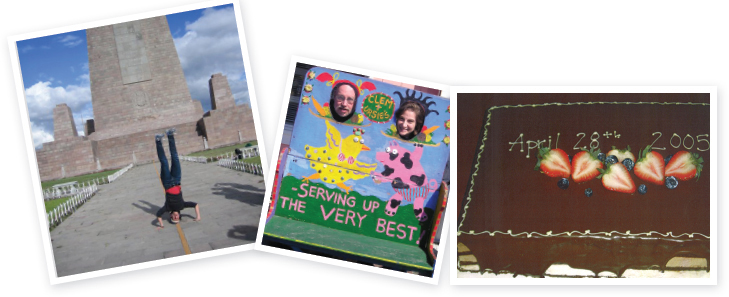Brainstorming
Chapter Opener
19
find a topic/ get an idea
Brainstorming
What do you do when you find yourself clueless, stuck, or just overwhelmed by the topic possibilities at the start of a writing project? Simple answer: Brainstorm. Put a notion on the table and see where it goes. Toy with an idea like a kitten with a catnip mouse. Push yourself to think through, around, over, and under a proposition. Dare to be politically incorrect or, alternatively, so conventional that your good behavior might scare your elders.
Naturally, you’ll match brainstorming techniques to the type of writing you hope to produce. Beginning a personal tale about a trip to Wrigley Field, you might make a list of sensory details to jog your memory — the smell of hot dogs, the catcalls of fans, the green grass of the outfield. (understand narratives) But for an assigned report on DNA fingerprinting, your brainstorming might itemize things you still must learn about the subject: what DNA fingerprinting is, how it is done, when it can be used, how reliable it is, and so on. (understand reports)
Find routines that support thinking. Use whatever brainstorming techniques get you interested in a project. Jogging, swimming, knitting, or sipping brew at the coffeehouse may be your stimulus of choice. Such routine activities keep the body occupied, allowing insights to emerge. Be sure to capture and record those ideas in notes or, perhaps, voice memos.

Whiteboards, flip charts, and even sticky notes can help you rapidly record your ideas.
Image Source/Getty Images.
One warning: Passive brainstorming routines can easily slip into procrastination. That comfortable corner at Starbucks might become a spot too social for much thinking or writing. When your productivity drops, change tactics.
Build from lists. Write down every plausible topic or, if you already have a subject, the major points you might cover. Don’t be picky at this stage: List everything that comes to mind. One idea will lead to another, then another. Even grocery lists work this way.
For instance, preparing a letter to the editor in defense of collegiate sports, you can first itemize arguments you’ve heard from friends or have made yourself. List the counterarguments you come up with too — as well as any relevant examples, news events, or people. Then pick out the more intriguing or plausible items, and arrange them tentatively, perhaps sequencing them by time or pairing arguments and counterarguments.
Map your ideas. If you find a list too static as a prompt for writing, another way may be to explore the relationships between your ideas visually. Some writers use logic trees to represent their thinking, starting with a single general concept and breaking it into smaller and smaller parts. Others begin with a key concept (just a word or two), circle it, and then begin to free-

© Hulton-
Try freewriting. This is a technique of nonstop composing designed to loosen restraints we sometimes impose on our own thinking. Typically, freewriting sessions begin slowly, with a few disconnected phrases and words. But, suddenly, there’s a spark and words stream onto the paper. Although freewriting comes in many forms, the basic formula is simple.
STAGE ONE
 Start with a blank screen or sheet of paper.
Start with a blank screen or sheet of paper. Put your subject or title at the top of the page.
Put your subject or title at the top of the page. Write on that subject nonstop for ten minutes.
Write on that subject nonstop for ten minutes. Don’t stop typing or lift your pen from the paper during that time.
Don’t stop typing or lift your pen from the paper during that time. Write nonsense if you must, but keep writing.
Write nonsense if you must, but keep writing.
STAGE TWO
 Stop at ten minutes and review what you have written.
Stop at ten minutes and review what you have written. Underscore or highlight the most intriguing idea, phrase, or sentence.
Underscore or highlight the most intriguing idea, phrase, or sentence. Put the highlighted idea at the top of a new screen or sheet.
Put the highlighted idea at the top of a new screen or sheet. Freewrite for another ten minutes on the new, more focused topic.
Freewrite for another ten minutes on the new, more focused topic.
Like other brainstorming techniques, freewriting works best when you already know something about a subject. You might freewrite successfully about standardized testing or working at fast-
Use memory prompts. When writing personal narratives, institutional histories, or even résumés, you might trigger ideas with photographs, yearbooks, Facebook pages, or perhaps a Twitter feed. An image from a vacation may bring events worth writing about flooding back to you. Even checkbooks or credit card statements may help you reconstruct past events or see patterns in your life worth exploring in writing.
Search online for your ideas. You can get lots of ideas by simply exploring most topics online (or in a library catalog) through keywords. Indeed, determining those initial keywords and then following up with new terms you discover while browsing is in itself a potent form of brainstorming.

A photo album is a great place to look for writing ideas because we tend to document meaningful moments.
Left: Allie Goldstein. Center: Courtesy of Ellen Darion. Right: Courtesy of Sid Darion.